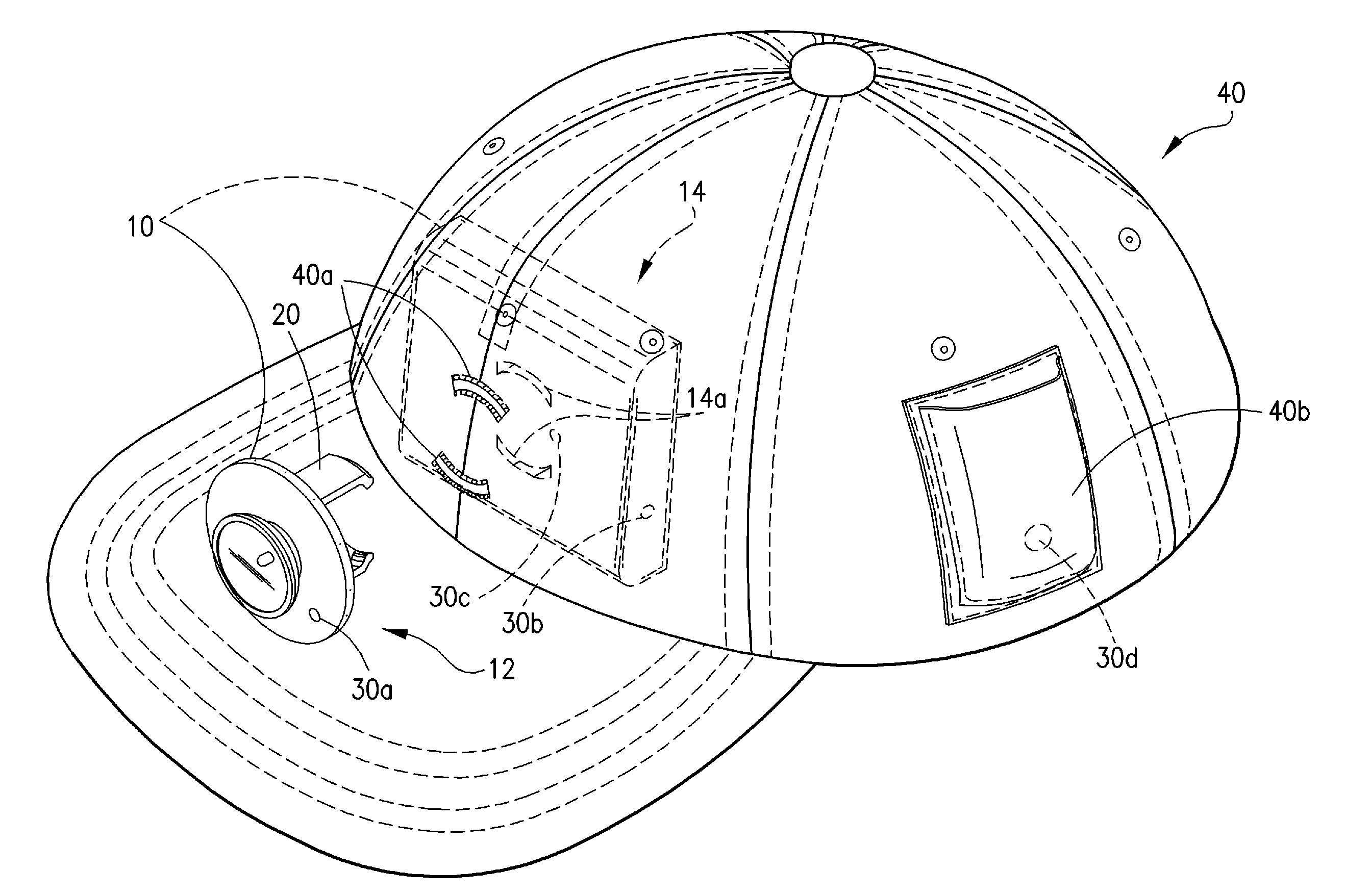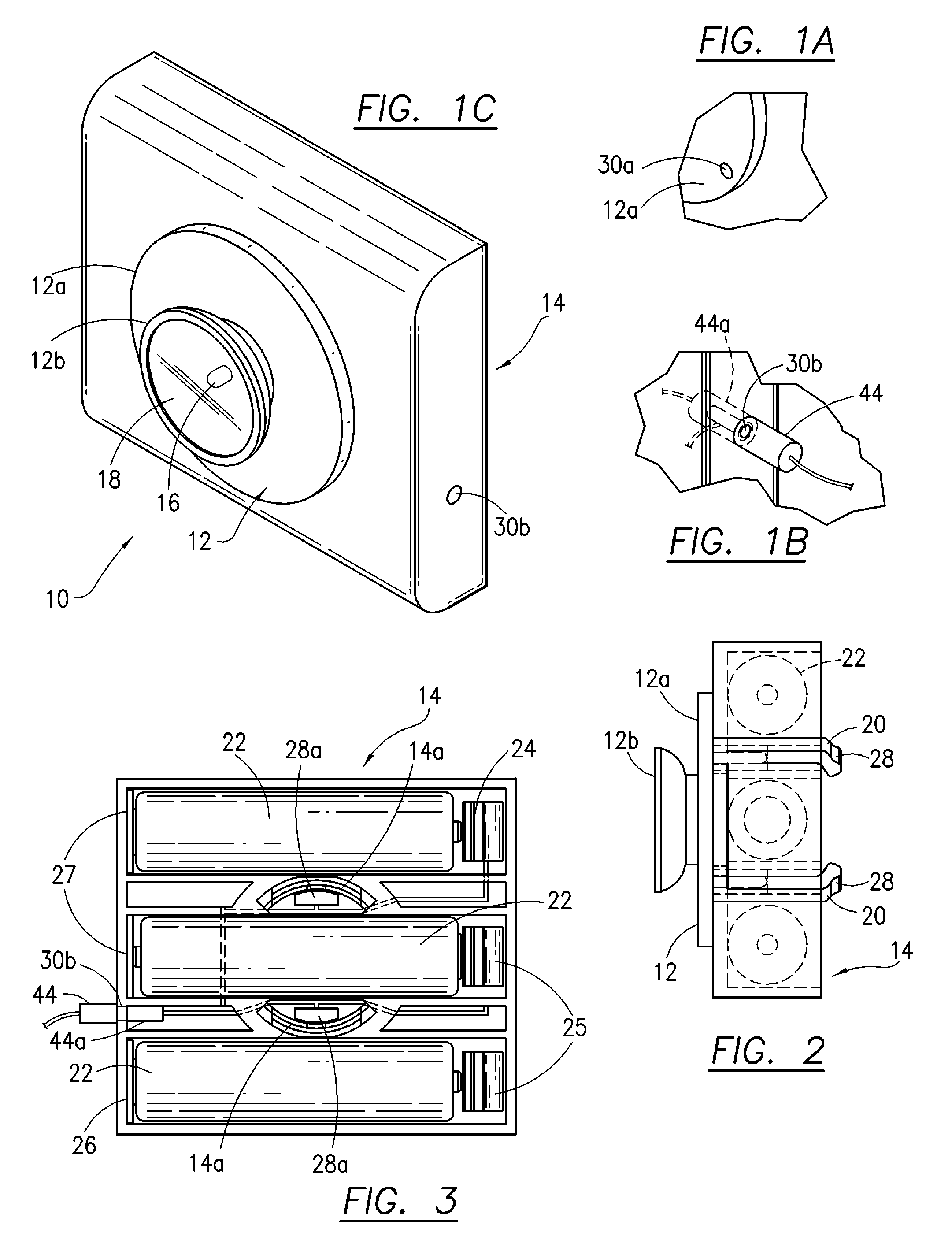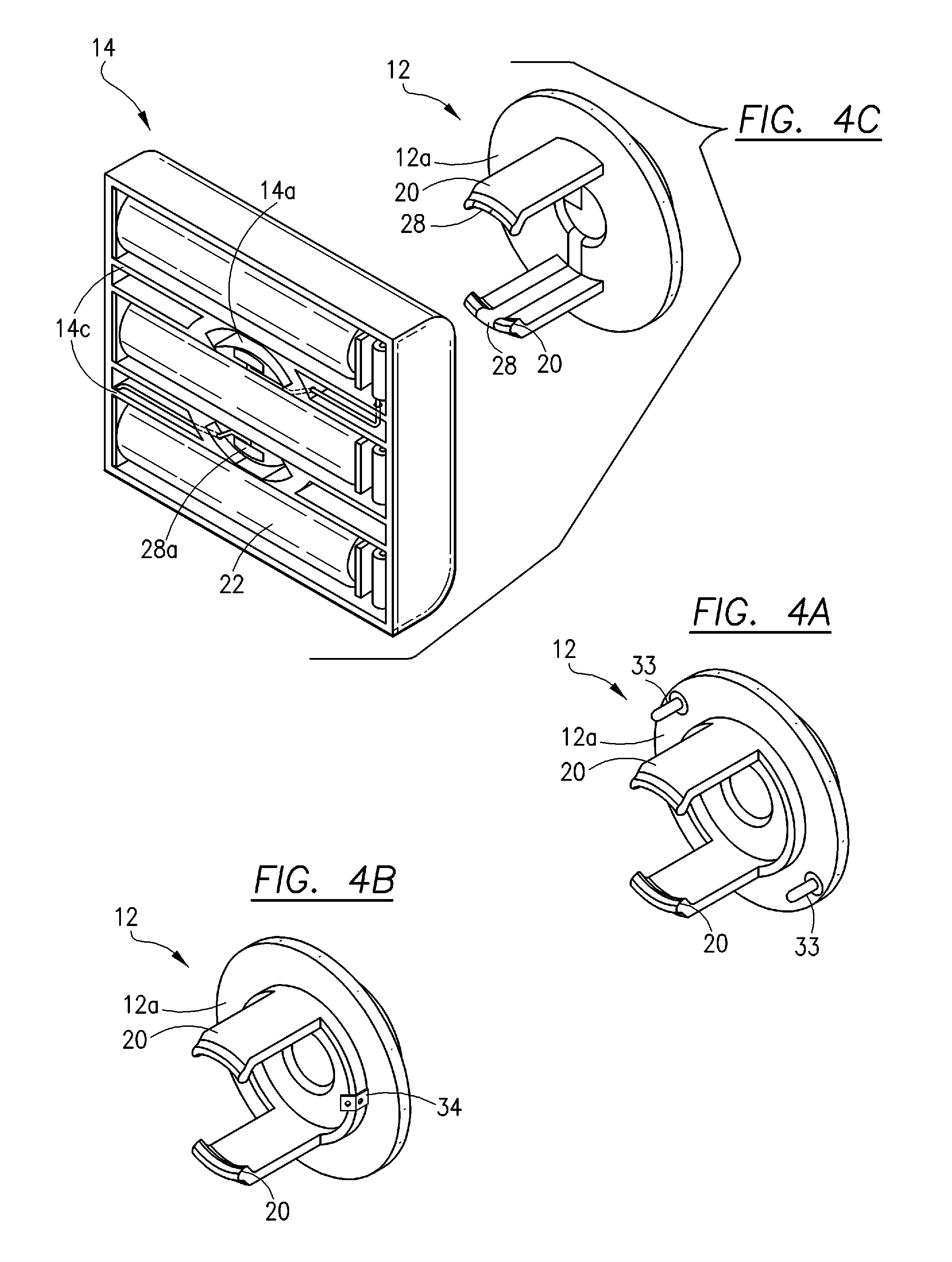Illumination device mountable through an aperture in a clothing object
a technology of illumination device and clothing object, which is applied in the direction of lighting support device, electric lighting with batteries, lighting and heating apparatus, etc., can solve problems such as difficult actuation, and achieve the effect of effective illumination of the scen
- Summary
- Abstract
- Description
- Claims
- Application Information
AI Technical Summary
Benefits of technology
Problems solved by technology
Method used
Image
Examples
Embodiment Construction
[0040]Referring now to the drawings, FIGS. 1A through 9 depict a preferred embodiment and variants thereof, wherein the illuminator casing and the power supply casing are separate from each other. The illuminator casing is located on the outside of the article of clothing or hat, and the power supply casing is located on the inside of the article of clothing. This preferred set of embodiments allows use of a power supply casing that has an efficient design and low profile, thereby providing comfort for the wearer. The illuminator casing and power supply casing are attached together through one or more apertures in the article of clothing or hat. It is also possible to provide an embodiment wherein the a thin wire extends from the power supply casing inside the article, and the illuminator casing external, without forming an aperture. A strong magnet may then be used to sandwich the article of clothing and support the illuminator casing in position, against another magnet or a steel ...
PUM
 Login to View More
Login to View More Abstract
Description
Claims
Application Information
 Login to View More
Login to View More - R&D
- Intellectual Property
- Life Sciences
- Materials
- Tech Scout
- Unparalleled Data Quality
- Higher Quality Content
- 60% Fewer Hallucinations
Browse by: Latest US Patents, China's latest patents, Technical Efficacy Thesaurus, Application Domain, Technology Topic, Popular Technical Reports.
© 2025 PatSnap. All rights reserved.Legal|Privacy policy|Modern Slavery Act Transparency Statement|Sitemap|About US| Contact US: help@patsnap.com



